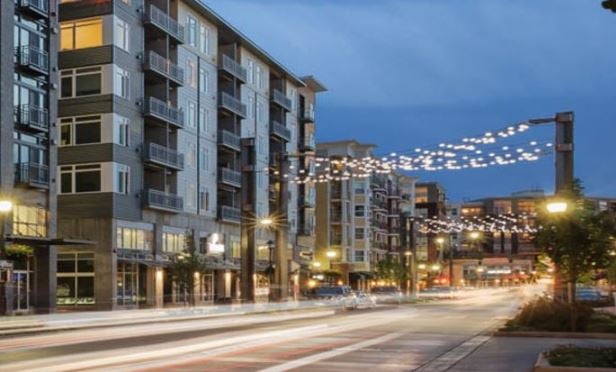SAN DIEGO—Companies used to be located near where their CEOs lived; now they are locating where the talent wants to be, CBRE's SVP Matt Carlson tells GlobeSt.com. And where they want to be in San Diego is Downtown, Carlson says. We spoke with Carlson exclusively about the Downtown market, what's driving activity there and how the market has changed in this cycle.
GlobeSt.com: What is driving current Downtown San Diego activity?
Carlson: The first thing is, on a more global scale, all the new and exciting projects delivering or getting ready to deliver Downtown. There's a ton of residential being delivered—almost 6,000 units are coming online in the next five years. There are a couple of big holes in the ground—the East Village has the Pendry Hotel going in, a four-star version of the Montage, and cranes are starting to come out; on the west side, the Broadway area, Bosa has a high-end residential tower going in that's going to be one of the top residential towers on the entire West Coast; and you've got the office market itself—all the office tenants looking at Downtown and all the fun people are having.
With all the amenities, employees are starting to live Downtown. There has been 350,000 square feet of new tenants coming to Downtown since the beginning of 2013, and some are significant in size: Aecom took nearly 50,000 square feet; Kleinfelder, which consolidated out of Scripps Ranch, took 45,000 square feet; Bumblebee Tuna left Kearny Mesa and came Downtown for 30,000 square feet; and Cypress Insurance, a subsidiary of Berkshire Hathaway, took 30,000 square feet after leaving Mission Valley. Houzz, a technology company out of the Bay Area, took 17,000 square feet—they are new to San Diego and growing. There are also many, many others; these are just some of the exciting new groups that have come into Downtown in the last two to two-and-a-half years, and it's driving big growth.
I also think there's a fundamental change in this cycle across all of real estate and Downtown is benefitting. Ten years ago, offices were located where the CEO or partners lived and where it's most convenient for them. If you were at the top of the pyramid or organization, you called the shots about where the company would be. But we are in an age of war for talent, particularly with these fast-growth tech companies. Their resources are in the employee—you get the edge from having the best talent. It's really shifted. The last cycle, the person who ran the real estate wasn't in the C suite—now that person is in the C suite because they're driving the culture for the whole company.
You're starting to see the employees having a voice in what they want the space to be, and they want it to have walkable amenities, they want a hotel-like feeling, a concierge, state-of-the-art gym facilities. They want a third place—you have your office and your home, but now they want to be able to go to the lobby and work on their computer or to an outdoor balcony. Some suburban owners have amenitized their space, but in the core, the amenities are already there. Whether you're two blocks from Petco Park or Little Italy—all of these buildings are catering toward the fact that tenants are really having the big influence on decision making.
GlobeSt.com: How has the market perspective on Downtown changed in this cycle?
Carlson: If we get out of our little cul-de-sac of San Diego and look at the great cities around the country, the suburban-to-urban flight is very strong and steady. Families with children are moving into cores because that's the place to get everything you want to have. Here in San Diego, there's a little more resistance to that because of the North County beaches, but based on traffic patterns, if you wanted to live in North County, you could get Downtown on the reverse commute in less than 30 minutes. There's been a shift, and once folks understand that the employees want to be in that market and the best opportunity for talent is in that market, there's not much pushback because it's easy to get into Downtown. You can even access any type of public transportation—the trolley, bus, Coaster—and the freeway to get to and from Downtown. It's easier to get Downtown than other places in the county, and forcing workers to come north to work has gotten brutal with the traffic in that direction. The overall view of Downtown has changed, and migration south has been welcomed.
GlobeSt.com: How is this current real estate boom in Downtown different from the previous cycle??
Carlson: In the previous cycle, Downtown was always a release valve. Once everything around Downtown filled up, Downtown would fill up, too—kind of an all-tides-rise situation in the past. But this migration into Downtown that we've seen this cycle hasn't been driven by that; it's been driven by people's specific business decisions to go there. There's been hospitality, residential, retail, and now there's enough mass there that's it's here to stay. Many neighborhoods are having a ton of success in Downtown: Little Italy, the East Village is on fire, and people see it as a sustainable community that they're not going to wonder if it's going to keep charging—it's a known commodity.
GlobeSt.com: How are Millennials impacting Downtown San Diego real estate, and how are building owners preparing space to meet their demand?
Carlson: There are some situations in existing product, but we only have so much space. Larger, more unique space like Makers Quarter is six blocks, and the development team has a master plan for grocery stores, public meeting areas and park spaces—and office tenants are dropped into the middle of that. In newer construction, it's everything we talked about on steroids—a fuller neighborhood as opposed to one building on one block with a bunch of amenities.
Because the East Village is the last area for development, there's talk about biotech having an outpost in East Village, and there's talk of education with some of the big local universities having a local footprint in that area. So, if you think of office, retail, residential, academic, culture and arts in one area, it could really be a special place.
© Touchpoint Markets, All Rights Reserved. Request academic re-use from www.copyright.com. All other uses, submit a request to [email protected]. For more inforrmation visit Asset & Logo Licensing.





